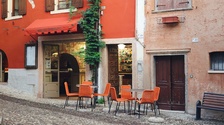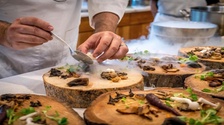ابحث بين معلمي الإنجليزية المتعددين...
مواضيع لك
هل تريد أن تقول شيئًا؟
اختيار المحرر

🎃 October Traditions: Halloween, Holidays, and Learning Portuguese
29 تأييدات · 12 التعليقات

The Curious World of Silent Letters in English
31 تأييدات · 20 التعليقات

“Quanto costa” vs. “Quant’è” in Italian
12 تأييدات · 6 التعليقات

5 Polite Ways to Say “No” at Work
35 تأييدات · 9 التعليقات

“Dare del tu” or “dare del Lei”? The question of formality in Italian
6 تأييدات · 3 التعليقات

Read the Classics of French Literature in the Original Text!
17 تأييدات · 0 التعليقات

Speak More Fluently with This Simple Technique
48 تأييدات · 12 التعليقات

Learning Spanish Through Regional Food Festivals
15 تأييدات · 2 التعليقات

How to Read and Understand a Business Contract in English
27 تأييدات · 8 التعليقات

6 Ways italki Can Help You Succeed in Your School Language Classes
24 تأييدات · 13 التعليقات
مقالات أكثر

